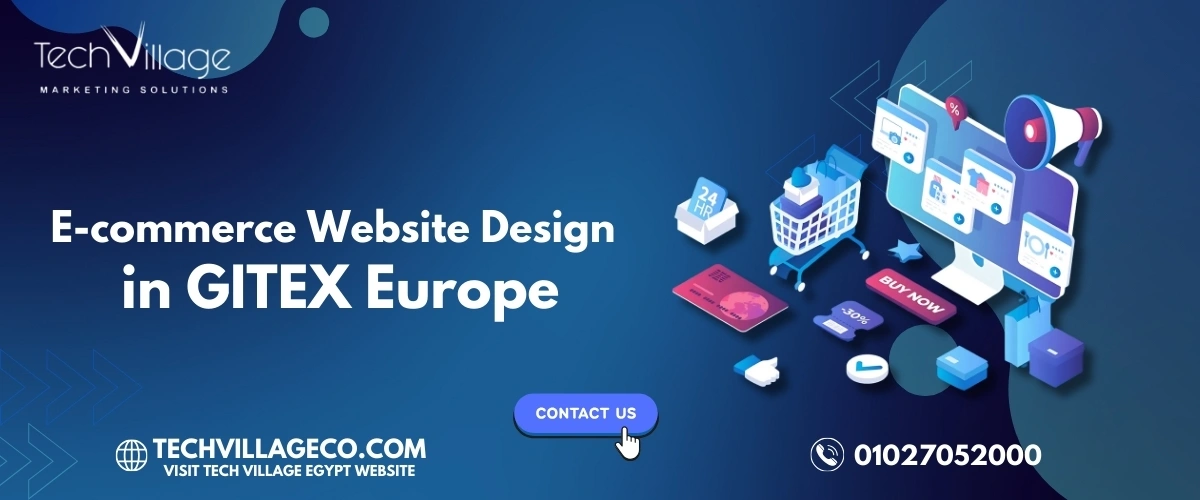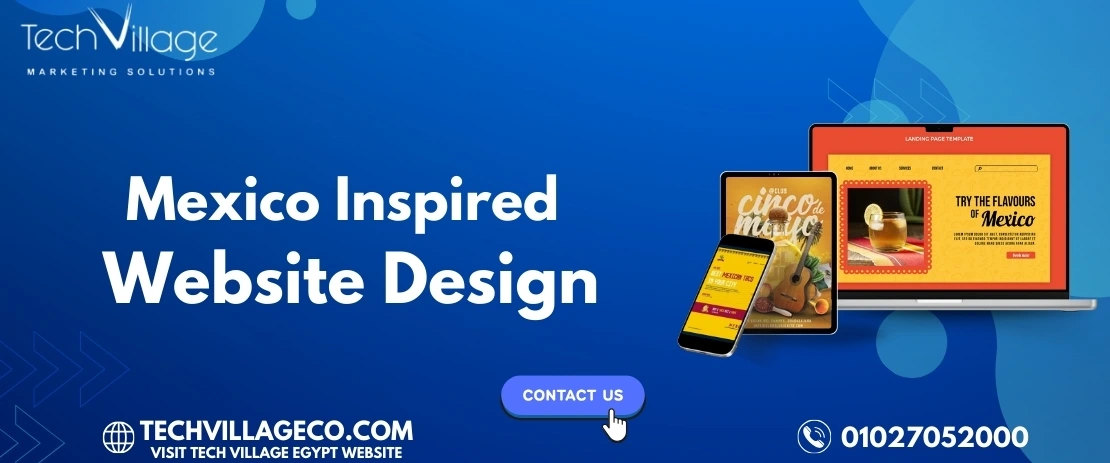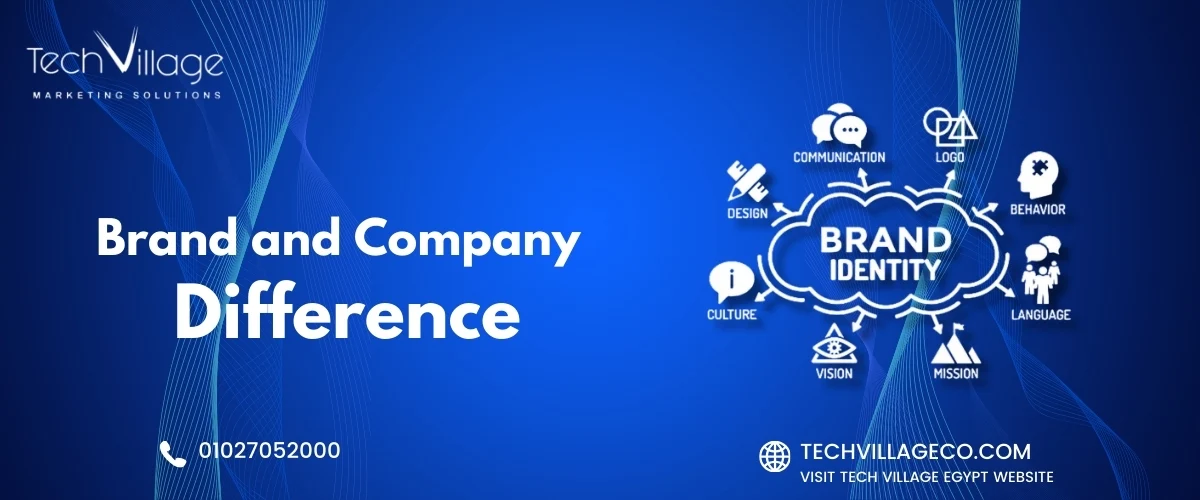GITEX Europe is one of the most anticipated technology conferences, bringing together innovators, industry leaders, and tech enthusiasts to explore cutting-edge advancements across various sectors. As a major global tech exhibition, GITEX Europe provides a platform for businesses to showcase the latest trends, tools, and innovations in digital transformation, including e-commerce website design.
Table of Contents
ToggleThe Role of E-commerce Website Design in Online Business Success
In today’s fast-evolving digital landscape, an e-commerce website is more than just an online storefront—it’s a critical business tool that affects:
✔ User experience (UX) – Ensuring seamless navigation, mobile-friendliness, and fast load times.
✔ Conversion rates – Optimized website design can significantly impact sales and customer retention.
✔ Brand perception – A well-designed website reflects a business’s credibility and trustworthiness.
At GITEX Europe, e-commerce businesses and web designers will explore the latest innovations in website design, including AI-powered personalization, mobile-first interfaces, AR/VR shopping experiences, and sustainable design practices.
Here’s : how to design website with wordpress?
What This Article Will Cover
This article will dive into:
✔ The importance of e-commerce website design and why it’s a key focus at GITEX Europe.
✔ Top trends in e-commerce website design showcased at the event.
✔ Insights from leading tech exhibitors and expert speakers.
✔ Actionable strategies to implement GITEX Europe’s innovations in your e-commerce website.
By the end of this guide, you’ll understand how GITEX Europe is shaping the future of e-commerce website design and how businesses can stay ahead in the digital commerce space. 🚀
Why E-commerce Website Design is a Key Focus at GITEX Europe
As e-commerce continues to dominate global retail, businesses must keep up with the latest innovations in website design to remain competitive. At GITEX Europe, e-commerce website design is a major focus, with industry leaders showcasing cutting-edge trends, AI-powered solutions, and user-centric innovations. Below are the key reasons why e-commerce website design is taking center stage at the event.
-
Growth of Digital Commerce and Online Retail
✔ E-commerce is booming: Online shopping has seen exponential growth, with global e-commerce sales expected to surpass $8 trillion by 2027.
✔ Shift in consumer behavior: More shoppers prefer online experiences over brick-and-mortar stores, making a well-designed e-commerce website essential.
✔ New technologies driving innovation: Features like AI-driven recommendations, AR/VR shopping, and blockchain security are redefining digital commerce.
💡 Example: Platforms like Amazon and Shopify are continuously updating their website design strategies to meet evolving consumer expectations.
-
Increasing Demand for Better UX/UI and Mobile-First Designs
✔ Mobile commerce (m-commerce) is growing: Over 70% of e-commerce traffic comes from mobile devices, making mobile-first design a necessity.
✔ Faster load times, intuitive navigation, and accessibility: Websites must deliver seamless experiences across devices to reduce bounce rates and improve conversions.
✔ Emphasis on user-centric design: Modern websites focus on clean layouts, interactive elements, and personalized shopping journeys to keep users engaged.
💡 Example: Companies like Nike and Apple leverage minimalist UI, high-quality visuals, and AI-powered search features to enhance user experience.
-
The Rise of AI, Automation, and Personalization in Online Shopping
✔ AI-driven recommendations: AI helps customize shopping experiences by analyzing user behavior and providing personalized product suggestions.
✔ Chatbots & virtual assistants: AI-powered chatbots improve customer support, product discovery, and checkout experiences.
✔ Automation in e-commerce design: Businesses are using AI tools to optimize website layout, dynamic pricing, and A/B testing for better performance.
💡 Example: Amazon’s AI algorithms analyze customer preferences to provide highly targeted product recommendations, increasing engagement and sales.
want to save the effort and design your website professionally? then get it from Tech Village
Top Trends in E-commerce Website Design Showcased at GITEX Europe
At GITEX Europe, e-commerce website design takes center stage as businesses explore cutting-edge innovations to enhance the online shopping experience. From AI-powered personalization to AR/VR shopping experiences, the event highlights the future of digital commerce. Below are the top trends in e-commerce website design showcased at the event.
- AI-Powered Personalization & Chatbots
✔ Enhancing Customer Engagement & Conversions
- AI-driven personalization helps analyze user behavior, purchase history, and preferences to deliver tailored shopping experiences.
- Intelligent chatbots provide 24/7 customer support, answer FAQs, and assist in product recommendations, improving user satisfaction.
✔ Real-World Examples of AI in E-Commerce Design
- Amazon & Netflix use AI algorithms to provide personalized product and content recommendations.
- Sephora’s AI chatbot offers personalized beauty product suggestions based on customer input.
💡 GITEX Europe will showcase AI-driven e-commerce platforms that revolutionize how businesses interact with customers online.
- Mobile-First & Responsive Web Design
✔ The Importance of Mobile Optimization in E-Commerce
- With over 70% of online purchases happening on mobile devices, businesses must prioritize mobile-first designs.
- A responsive website ensures smooth navigation, quick load times, and a seamless checkout experience across all devices.
✔ Best Practices in Adaptive & Progressive Web App (PWA) Design
- Adaptive design tailors content based on screen size, improving usability.
- Progressive Web Apps (PWAs) provide an app-like experience, enabling offline browsing and faster page loads.
💡 At GITEX Europe, businesses will learn how mobile-first designs drive higher engagement and sales.
- Voice Commerce & Smart Shopping Experiences
✔ How Voice Search is Impacting Website Design & SEO
- Consumers increasingly use voice assistants like Alexa, Google Assistant, and Siri for online shopping.
- Websites must be optimized for voice search with natural language processing (NLP) and conversational UI.
✔ Integration of Voice AI Assistants in E-Commerce Platforms
- AI-powered voice assistants help users search for products, check prices, and complete purchases hands-free.
- Brands are integrating voice-enabled chatbots to enhance user interactions.
💡 GITEX Europe will showcase how businesses can leverage voice technology for a frictionless shopping experience.
- Augmented Reality (AR) & Virtual Reality (VR) in E-Commerce
✔ Enhancing the Online Shopping Experience with Immersive Technologies
- AR/VR bridges the gap between physical and online shopping by allowing customers to try products virtually before purchasing.
- Virtual showrooms and 3D product visualization enhance engagement and reduce return rates.
✔ Examples of Brands Using AR/VR for Product Visualization
- IKEA Place App lets users preview how furniture would look in their homes.
- L’Oréal’s AR beauty tool allows customers to try makeup virtually before buying.
💡 GITEX Europe will feature innovative AR/VR solutions transforming the e-commerce landscape.
- Sustainability & Eco-Friendly Web Design
✔ The Shift Toward Energy-Efficient Web Design
- Sustainable websites use low-energy hosting solutions, optimized code, and efficient images to reduce carbon footprints.
- Dark mode and minimalistic design trends contribute to energy savings and improved user experience.
✔ Implementing Sustainable UI/UX Practices for E-Commerce Websites
- Using eco-friendly color palettes, streamlined navigation, and lightweight animations.
- Partnering with green hosting providers to minimize environmental impact.
💡 GITEX Europe will highlight how businesses can integrate sustainability into their digital strategies.
t GITEX Europe 2025, scheduled for May 21-23 in Berlin, Germany, e-commerce website design will be a significant focus, featuring leading companies, industry experts, and interactive sessions dedicated to the latest innovations in the field.
Leading Companies & Startups Presenting Breakthrough Solutions
GITEX Europe 2025 is set to host around 6,000 exhibitors from over 100 countries, including 1,800 startups, showcasing cutting-edge technologies and solutions in e-commerce website design.
Notable Exhibitors:
- Amazon Web Services (AWS): As a confirmed participant, AWS will present its latest cloud-based solutions tailored for e-commerce platforms, emphasizing scalability and security.
- Grandstream: Known for award-winning communication solutions, Grandstream will showcase tools that enhance customer interaction on e-commerce websites.
- ThreatLocker: Specializing in cybersecurity, ThreatLocker will present solutions to protect e-commerce platforms from emerging threats.
Industry Experts & Keynote Speakers Discussing Future Design Trends
The event will feature over 1,400 speakers, including industry leaders and visionaries who will share insights into the future of e-commerce website design.
Highlighted Speakers:
- Dr. Luc Julia: Chief Scientific Officer at Renault Group and co-creator of Siri, Dr. Julia will discuss the integration of AI in enhancing user experiences on e-commerce platforms.
- Moti Levy: CEO of DeviantArt, leading a vast online community, will share strategies on building engaging and user-centric e-commerce websites.
- Davit Baghdasaryan: Co-Founder & CEO of Krisp.ai, recognized for innovative noise-canceling technology, will explore the role of AI in improving customer interactions on e-commerce sites.
Workshops & Panel Discussions Focusing on E-commerce UX/UI
GITEX Europe 2025 will offer a variety of workshops and panel discussions aimed at enhancing user experience (UX) and user interface (UI) design for e-commerce platforms.
Key Sessions:
- AI Integration in E-commerce Design: Exploring how artificial intelligence can personalize shopping experiences and streamline navigation.
- Mobile-First Design Strategies: Discussing the importance of responsive design in capturing the growing mobile shopper demographic.
- Sustainable Web Design Practices: Highlighting eco-friendly design approaches that appeal to environmentally conscious consumers.
These sessions will provide attendees with practical knowledge and innovative strategies to implement in their e-commerce platforms, ensuring they remain competitive in the evolving digital marketplace.
By participating in GITEX Europe 2025, businesses and professionals can gain valuable insights into the latest trends and technologies shaping the future of e-commerce website design.
Here’s: Website Development Company.
How to Implement GITEX Europe Insights into Your E-commerce Website
GITEX Europe showcases cutting-edge innovations in e-commerce website design, from AI-driven experiences to immersive shopping technologies. Businesses that adopt these insights can enhance user experience, improve conversion rates, and stay ahead of digital commerce trends. Here’s how you can implement key takeaways from GITEX Europe into your e-commerce website.
-
Adopting AI & Automation for Better Customer Experiences
✔ AI-Powered Product Recommendations: Machine learning analyzes customer behavior to suggest relevant products, increasing engagement and sales.
✔ AI Chatbots & Virtual Assistants: AI-driven chatbots provide 24/7 customer support, personalized shopping assistance, and faster issue resolution.
✔ Automated Email & Marketing Campaigns: AI can segment customers and send personalized email promotions and abandoned cart reminders.
💡 Example: Amazon’s AI recommendation engine generates 35% of its total sales by suggesting personalized products.
🚀 How to Implement:
- Use AI-powered tools like ChatGPT, Drift, or Intercom for chatbots and automated support.
- Integrate AI-based recommendation engines like Nosto or Dynamic Yield for personalized shopping experiences.
-
Revamping Website Layouts & UI for Seamless Navigation
✔ Minimalist & Clean UI: A clutter-free design with clear product categories, intuitive menus, and a fast checkout process improves user experience.
✔ Dark Mode & Adaptive Design: More websites are offering dark mode and customizable themes for user convenience.
✔ Micro-Animations & Interactive Elements: Enhancing engagement with subtle hover effects, smooth transitions, and interactive buttons.
💡 Example: Apple’s e-commerce website is known for its sleek, modern UI that prioritizes product visuals and easy navigation.
🚀 How to Implement:
- Redesign your website using modern UI principles with tools like Figma or Adobe XD.
- Optimize page layouts with heatmaps (Hotjar) to analyze user behavior and improve navigation flow.
-
Integrating AR/VR to Enhance Product Display
✔ Augmented Reality (AR) Shopping Experiences: AR allows customers to visualize products in real-world environments before purchasing.
✔ Virtual Try-On Features: Brands use AR-powered tools to let customers try makeup, clothing, or furniture virtually.
✔ 3D Product Visualization: Interactive 3D models increase engagement and reduce return rates.
💡 Example:
- IKEA Place App uses AR to let customers see how furniture looks in their homes.
- L’Oréal’s AR-powered beauty tools let users try different makeup shades virtually.
🚀 How to Implement:
- Use AR tools like Shopify AR or Google’s ARCore to integrate AR features into your website.
- Implement 3D product visualization plugins available for e-commerce platforms like Magento and WooCommerce.
-
Optimizing Website Speed & Mobile Performance for Higher Conversions
✔ Mobile-First Optimization: With over 70% of online traffic coming from mobile devices, ensuring fast-loading, mobile-friendly pages is crucial.
✔ CDN & Image Compression: Using a Content Delivery Network (CDN) and optimized images speeds up website performance.
✔ Lazy Loading & AMP (Accelerated Mobile Pages): These features improve page load times and SEO rankings.
💡 Example: Google prioritizes mobile-optimized websites in search rankings, making mobile performance essential for visibility.
🚀 How to Implement:
- Use Google’s PageSpeed Insights to identify and fix speed-related issues.
- Compress images with TinyPNG and enable lazy loading for faster performance.
- Implement AMP (Accelerated Mobile Pages) for quick-loading product pages.
Conclusion
As showcased at GITEX Europe, the future of e-commerce website design is being shaped by AI-driven personalization, mobile-first UX, immersive AR/VR experiences, and sustainable web design. Businesses that embrace these cutting-edge trends will be better positioned to enhance user experience, boost conversions, and stay competitive in the evolving digital marketplace.
🚀 Ready to elevate your e-commerce website? Implement these insights from GITEX Europe and future-proof your online store for long-term success!

 AR
AR




